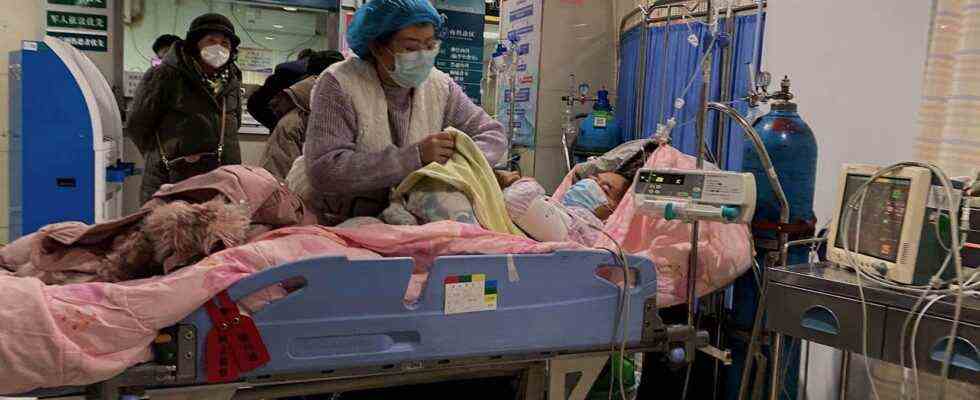In China, in hospitals saturated by the worst wave of COVID-19 the country has ever seen, infected doctors are working tirelessly with elderly patients in distress.
Three years after the appearance of the very first cases of coronavirus in Wuhan (center), the country is facing an explosion of patients, since the sudden lifting of most health restrictions in early December.
By the very admission of the authorities, the extent of the epidemic is today “impossible” to determine, screening tests are no longer compulsory and the data fragmentary.
In no time, the health system found itself overwhelmed, pharmacies stormed for anti-fever drugs, while crematoriums were overwhelmed with the influx of bodies.
At Nankai Hospital in Tianjin (north), a port city located 140 kilometers from Beijing, Agence France-Presse (AFP) counted around twenty elderly patients lying on stretchers, right in the middle of the emergency department.
Most are under intravenous, others visibly in great respiratory distress. Some seem half or totally oblivious.
“They all have COVID-19,” a doctor told AFP, while a colleague lamented the lack of beds available for a relative of a patient.
Here, the emergencies are more congested than usual “because of the epidemic”, underlines another doctor.
Positive for the coronavirus, he must nevertheless continue to work, like “almost everything” the rest of the medical teams, he wishes to emphasize.
Despite a wave of contamination on an unprecedented scale, the Chinese health authorities have put an end to the daily publication of COVID-19 figures.
With the end of generalized tests and the decision of the authorities to change the definition of a death from the coronavirus, these statistics appeared to be totally out of step with the reality on the ground.
In a specific department for fever patients, doctors in full suits strive to supervise around thirty patients at a time, mostly elderly.
From her medical bed, an elderly woman moans. “Try not to move too much,” a man whispers to him, cutting with the ambient crossover.
“Four hour wait”
In a nearby hospital, AFP saw a deceased person being evacuated from a treatment room.
More than 25 others, also of advanced age, were lying on makeshift beds in the narrow corridors of the emergency room.
Among them, patients on a drip or inert. But also sick people shivering despite their woolen caps and thick blankets. Some smother a fit of coughing in their masks. Blue oxygen cylinders are visible.
Caregivers move patients around on stretchers or wheelchairs, trying not to bump into other patients.
In the resuscitation room, doctors are busy around an elderly patient, connected to machines measuring his signs of life.
Security guards ensure outside that the wait for a consultation takes place in peace.
A hospital employee confirmed to AFP that the majority of patients admitted to the emergency room developed complications related to COVID-19.
In one corner, a man dabs a cotton ball soaked in water on the parched lips of an elderly woman. Lying on her stretcher, she breathes with difficulty.
In the midst of the constant ballet of ambulances, an elderly man, who claims to be positive for COVID-19, presents himself at the entrance of the hospital. “There is a four-hour wait to see a doctor,” replies a caregiver.
In front of him, “300 people” are already waiting, according to the caregiver’s estimates.
These scenes are far from being isolated cases. AFP has witnessed similar situations in Shanghai, the economic capital, but also in Chongqing, a huge city-metropolis in southwestern China where the influx of patients is also straining the health system.
